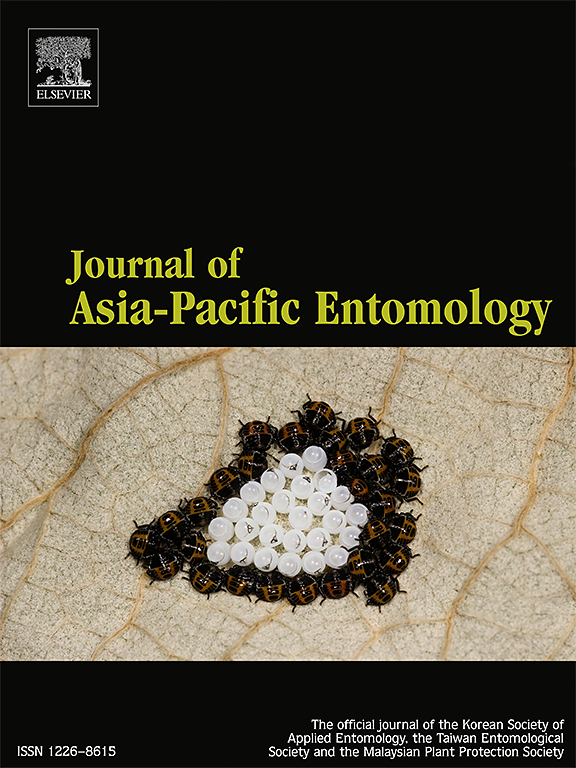A preliminary phylogenetic analysis of Cerambycinae (Coleoptera, Cerambycidae) focusing on four Palaearctic genera: Cerambyx, Isotomus, Ropalopus and Neoplagionotus
IF 1.1
3区 农林科学
Q3 ENTOMOLOGY
引用次数: 0
Abstract
Cerambycinae (Coleoptera, Cerambycidae) is a highly diverse subfamily of longhorned beetles, recognized for its significant economic and ecological importance. However, its phylogenetic relationships, even in the less diverse and much better understood fauna of the Northern Hemisphere, remain underexplored. Our study presents a preliminary phylogenetic analysis of the subfamily with a focus on primarily Palaearctic genera Isotomus Mulsant, 1862, Neoplagionotus Kasatkin, 2005, and Ropalopus Mulsant, 1839, as well as the type genus of Cerambycidae, Cerambyx Linnaeus, 1758. Maximum likelihood and Bayesian Inference analyses were conducted utilising two mitochondrial markers, COI and 16S rRNA, and two divergent domains (D1 and D2) of a nuclear marker, 28S rRNA, for 129 termini, 35 of them first time presented in this study. According to our results, Cerambyx was found to be paraphyletic due to the inclusion of Pseudaeolesthes. Ropalopus clustered with Callidium, Oupyrrhidium, and Semanotus in a distinct group from Phymatodes and Pyrrhidium that supports polyphyly of Callidini. In the tribe Clytini, Neoplagionotus was sister to Echinocerus, and they were separated from Plagionotus. The type species of Isotomus, I. speciosus, was placed sister to Demonax.

天牛科(鞘翅目,天牛科)的系统发育初步分析,重点分析了古北四属:天牛属、异tomus属、Ropalopus属和Neoplagionotus
天牛科(鞘翅目,天牛科)是长角甲虫中一个高度多样化的亚科,具有重要的经济和生态意义。然而,它的系统发育关系,即使在较少的多样性和更好地了解北半球的动物群中,仍然没有得到充分的探索。本研究对该亚科进行了初步的系统发育分析,主要集中在古北的Isotomus Mulsant属(1862)、Neoplagionotus Kasatkin属(2005)和Ropalopus Mulsant属(1839)以及陶螨科模式属(Cerambyx Linnaeus)(1758)。利用两个线粒体标记COI和16S rRNA,以及一个核标记28S rRNA的两个不同结构域(D1和D2)对129个末端进行了最大似然和贝叶斯推断分析,其中35个是本研究中首次发现的。根据我们的结果,陶粒被发现是由于假牙的包裹性。Ropalopus与Callidium, Oupyrrhidium和Semanotus聚集在一个与Phymatodes和Pyrrhidium不同的群体中,支持Callidini的多聚性。在Clytini部落中,Neoplagionotus是Echinocerus的姐妹,他们从Plagionotus中分离出来。Isotomus的模式种I. speciosus被列为Demonax的姊妹种。
本文章由计算机程序翻译,如有差异,请以英文原文为准。
求助全文
约1分钟内获得全文
求助全文
来源期刊

Journal of Asia-pacific Entomology
Agricultural and Biological Sciences-Insect Science
CiteScore
2.70
自引率
6.70%
发文量
152
审稿时长
69 days
期刊介绍:
The journal publishes original research papers, review articles and short communications in the basic and applied area concerning insects, mites or other arthropods and nematodes of economic importance in agriculture, forestry, industry, human and animal health, and natural resource and environment management, and is the official journal of the Korean Society of Applied Entomology and the Taiwan Entomological Society.
 求助内容:
求助内容: 应助结果提醒方式:
应助结果提醒方式:


